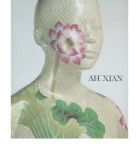About Face
by Mark Calderwood

With a record field of hopefuls for this year’s Archibald Prize safely tucked in, it’s a good moment to take a look around at what’s actually new in portraiture…
David Rosetzky’s video portrait of actor Cate Blanchett is a great stride forward. The sparse but sophisticated 10-minute video portrait follows the award-winning actor performing choreographed sets of movements and dance, focusing on her relationship to the process of performance and transforming herself in approaching the roles she inhabits. The video portrait makes full, conscious use of digital media to present her as an active subject; an ideal way to represent someone whose life is about assuming new identities by bringing together words and movement on film.
Media artist Shaun Gladwell created a number of experimental portraits during his time as an official war artist, recording and interpreting the Australian experience of war in Afghanistan. While his slow-motion video works turn the trained precision of defence personnel into meditative, almost ritual gestures, the most striking portraits are of the backs of soldiers’ heads. There is a powerful sense of vulnerability to these images, that places us directly in their blind spot, but also acts as a surrogate for us- we see what they see, and so are made to feel more strongly what they must feel, far from home in a volatile situation in a desolate environment. Without facial features, we look for other signs to read; the texture of hair, the tense set of shoulders, the weave of an Afghan scarf all become tactile and almost shockingly intimate. The sense of frustrated connection prompts us to think what it takes for each individual to be in such an unforgiving place, doing such a dangerous job.
Ah Xian takes his portrait of paediatrician Dr John Yu AC off the wall and outside the western idiom. Sculpted in traditionally-crafted porcelain, the portrait bust marries Yu’s Chinese heritage with his distinguished career working with children’s health, casting him as a Buddha-like figure. The celadon bust has the spiritually uplifting, serene solidity and generosity of a Buddhist statue or beloved grandpa, contentedly contemplating as brightly dressed, exuberant children climb about his shoulders; a portrait every bit as insightful and eloquent as conventional paint of canvas.
Guy Ben-Ary is reinventing the entire idea of portraiture. For his latest project cellF, the biotechnology researcher and artist is making use of a revolutionary technique to reverse-engineer cells into their embryonic state as stem cells, which can then be made to grow into virtually any cell in the body; his donated cells are being grown into a neural network, living brain tissue, which will interface with and activate a robotic body currently being developed. Ben-Ary aims to blurs the lines between art, science, even what constitutes a person with this astonishing 21st century self-portrait, to start people thinking about what future scenarios, what potential forms of life, might become possible with this technology.






